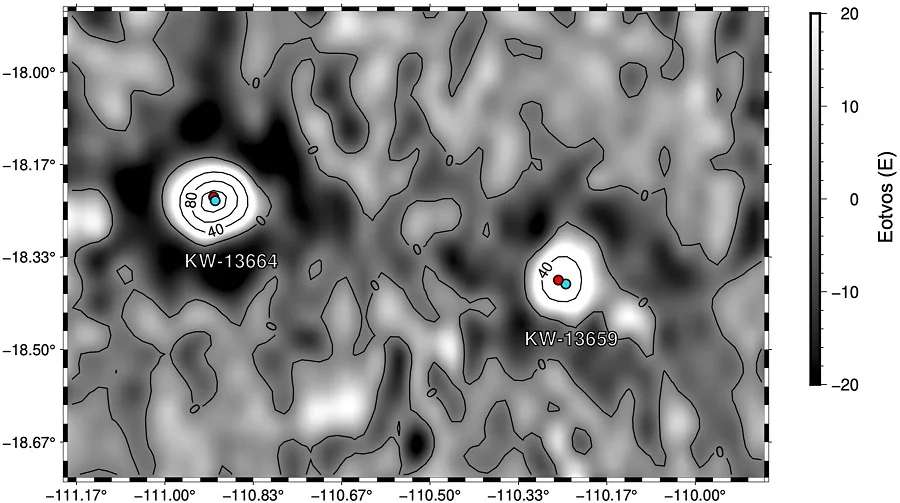A team of oceanographers from the Scripps Institution of Oceanography, working with a colleague from Changnam National University and the University of Hawaii, mapped 19,000 previously unknown underwater volcanoes in the world’s oceans using radar satellite data. In an article published in the journal earth and space science, The group explains how they use data from radar satellites to measure seawater crest to find and map underwater volcanoes, and why this is important.
Like the land, the bottom of the ocean has a diverse topography. And as on land, the really standout features are the mountains – in the ocean they’re called seamounts. As on land, they can be formed by tectonic plates pushing against each other or by volcanic eruptions. Currently, only a quarter of the seafloor has been mapped, which means no one knows how many seamounts there are or where they might be. This can be a problem for submarines – US subs have encountered seamounts twice, putting such vehicles and their crews at risk. But not knowing where the seams are is another problem. This prevents oceanographers from creating models that represent the flow of ocean water around the world.
In this new venture, the research team set out to explore and map as many seamounts as possible, using data from radar satellites to do so. Of course, such satellites cannot really see seamounts, but instead measure the height of the sea surface, which changes due to changes in gravitational force associated with the topography of the seafloor; an effect known as a sea mound. At the same time, they found 19,000 previously unknown underwater mountains.
The team notes in their paper that other important reasons for mapping the ocean floor include things like helping with seafloor mining – seamounts contain large amounts of rare earth minerals. More complete maps of seamounts will also help geologists better map the planet’s tectonic plates and geomagnetic field. Additionally, some seamounts are home to large numbers of marine life.
But most importantly, they greatly affect the deep ocean current. When currents flow into seamounts, they carry colder water with them, pushing upwards and mixing in unknown ways. Mapping such currents has become more important as the oceans absorb more heat and carbon dioxide from the atmosphere due to ongoing climate change and dissolve freshwater.
Source: Port Altele
